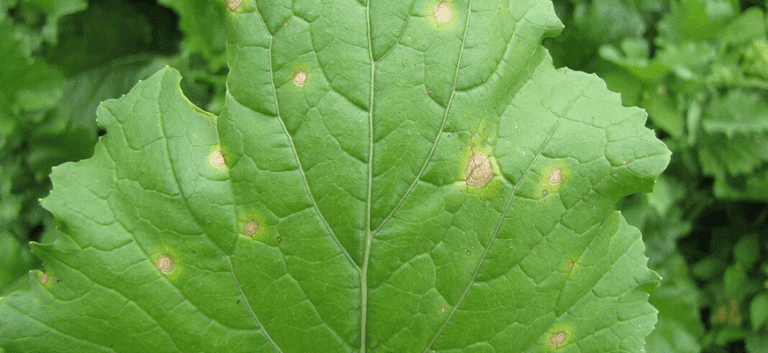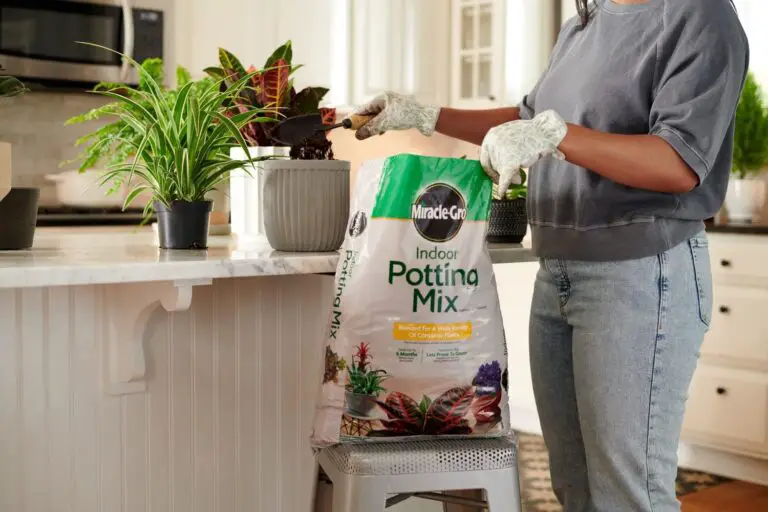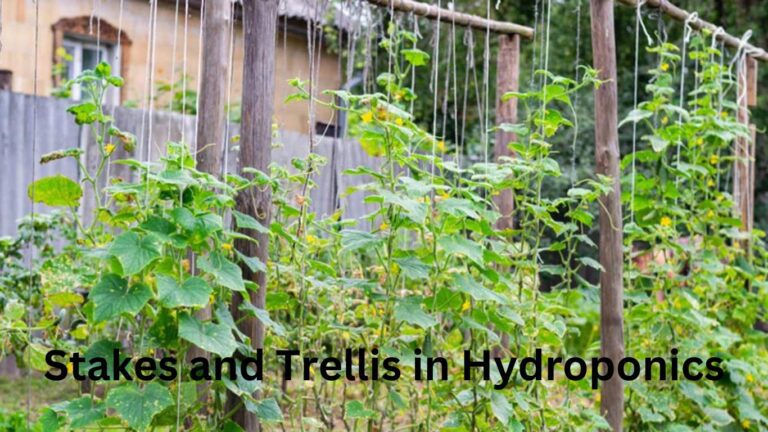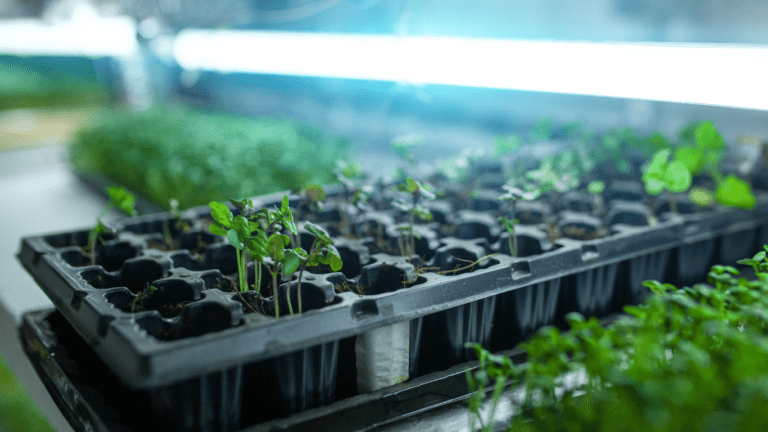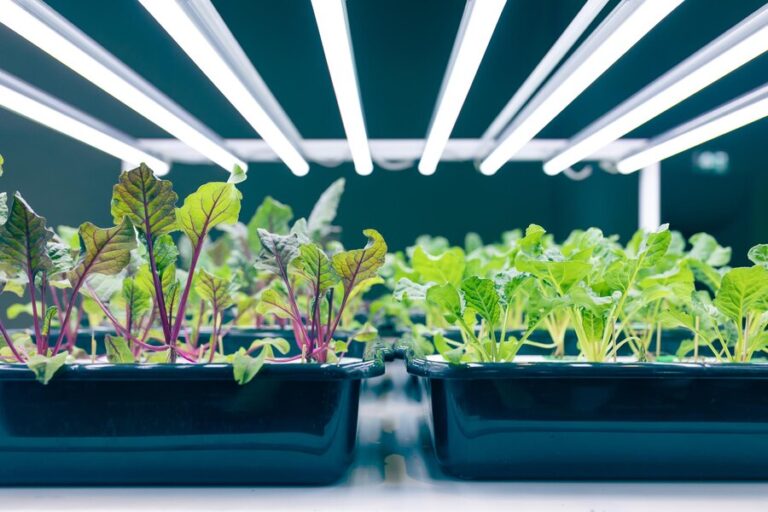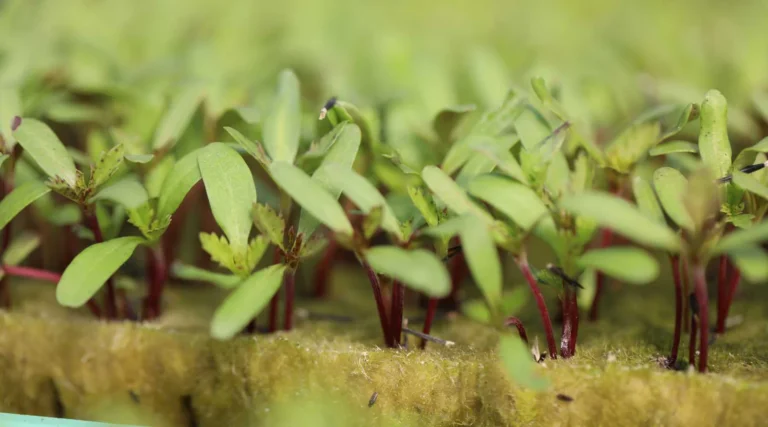The Ultimate Guide to Cultivating Hydroponic Kale
Table of Contents
1) Introduction to the Technique of Hydroponic Kale
Hydroponic Kale cultivation is a revolutionary technique that is transforming the way we grow plants. Gone are the days of relying solely on soil for cultivating crops, as hydroponics offers a cleaner, more efficient, and highly productive alternative. This technique involves growing plants in nutrient-rich water, without the need for traditional soil. Instead, a carefully calibrated nutrient solution is provided directly to the plant’s roots, ensuring optimal growth and health.
One of the key benefits of hydroponic cultivation for plants like kale is the ability to maximize space utilization. With traditional soil-based farming, larger areas of land are required to accommodate the extensive root systems of plants. However, hydroponics eliminates this constraint by allowing plants to grow vertically, freeing up valuable space. This means you can cultivate a higher quantity of kale in a smaller area, making it an ideal option for urban gardening or those with limited land availability. Additionally, hydroponic systems can be set up indoors, offering year-round cultivation opportunities free from seasonal limitations.

2) Benefits of Hydroponic Cultivation for Kale
Hydroponic cultivation offers numerous benefits when it comes to growing kale. One of the main advantages is the ability to have complete control over the growing conditions. In a hydroponic system, nutrients and water are delivered directly to the plant roots, ensuring they receive everything they need for optimal growth. This results in faster and healthier growth compared to traditional soil-based cultivation methods.
Another benefit of hydroponics for kale cultivation is the ability to maximize space utilization. With hydroponics, plants can be grown vertically, allowing for more plants to be grown in the same area. This is particularly beneficial for urban gardeners or those with limited space. Additionally, hydroponic systems can be set up in a controlled environment, allowing for year-round cultivation and minimizing the impact of external factors such as weather conditions. This ensures a consistent supply of fresh kale regardless of the season.
In conclusion, hydroponic cultivation provides several advantages for growing kale. Not only does it offer precise control over the growing conditions, but it also maximizes space utilization and allows for year-round cultivation. These benefits make hydroponics a valuable technique for gardening enthusiasts looking to grow kale in a more efficient and sustainable manner.

3) Choosing the Right Kale Varieties for Hydroponics
Choosing the right kale varieties for hydroponics is a crucial step in ensuring a successful and productive cultivation. While kale is already known for its adaptability and ability to thrive in various climates and growing conditions, selecting the right varieties specifically for hydroponic cultivation can further enhance its growth and quality.
When choosing kale varieties for hydroponics, it is important to consider their growth characteristics, such as leaf shape, color, and texture. Opt for varieties that are known for their yield, disease resistance, and tolerance to environmental conditions commonly encountered in hydroponic systems. Some popular choices include Lacinato kale (also known as Tuscan or Dinosaur kale), Red Russian kale, and Dwarf Blue kale. These varieties exhibit excellent growth potential and are well-suited for hydroponic environments. Additionally, it is advisable to select varieties that are relatively compact and have a shorter growing cycle, as they can maximize space utilization in your hydroponic setup and provide faster harvests.
| Kale Variety | Growth Characteristics | Considerations |
|---|---|---|
| Curly Kale | – Frilly, curly leaves | – Requires sufficient space for leaf expansion |
| – Compact growth habit | – Suitable for systems with vertical space | |
| – Often has a robust, earthy flavor | – Suitable for salads, smoothies, or cooked dishes | |
| —————— | —————————————————– | ——————————————————– |
| Lacinato (Dino) | – Dark, long, blistered leaves | – Performs well in nutrient-rich hydroponic solutions |
| – Distinctive texture | – Prone to aphid infestations; monitor regularly | |
| – Mild and slightly sweet flavor | – Suitable for raw consumption or lightly cooked | |
| —————— | —————————————————– | ——————————————————– |
| Red Russian Kale | – Purple stems and fringed leaves | – May exhibit faster growth in hydroponic environments |
| – Tolerant of cooler temperatures | – Considered a “cut-and-come-again” variety | |
| – Mild, sweet flavor with a hint of peppery notes | – Harvest outer leaves for continuous production | |
| —————— | —————————————————– | ——————————————————– |
| Siberian Kale | – Blue-green leaves with a smoother texture | – Resistant to cold temperatures; suitable for winter |
| – Upright growth habit | – Adaptable to various hydroponic systems | |
| – Slightly sweet and tender leaves | – Harvest leaves at a young stage for tenderness |
4) Setting Up Your Hydroponic System for Kale Cultivation
Setting up your hydroponic system for kale cultivation requires careful planning and attention to detail. One of the first steps is to decide on the type of hydroponic system that best suits your needs. There are several options available, including nutrient film technique (NFT), deep water culture (DWC), and ebb and flow systems. Each system has its own advantages and considerations, so it’s important to research and select the one that aligns with your goals and resources.
Once you’ve chosen a hydroponic system, it’s time to assemble the necessary components. This typically includes a reservoir or tank to hold the nutrient solution, a water pump, air stones, growing trays or channels, and suitable grow lights. It’s important to ensure that all the components are of high quality and properly sized to accommodate the number of kale plants you plan to grow. Additionally, consider investing in a pH meter and an electrical conductivity (EC) meter to monitor and adjust the nutrient solution as needed.
To create an optimal growing environment, it’s essential to set up your hydroponic system in a well-ventilated area with controlled temperature and humidity levels. Kale plants thrive best at temperatures between 60-70°F (15-21°C) and a relative humidity of around 40-50%. Proper ventilation ensures fresh air circulation, which helps prevent the buildup of excess heat and humidity that can lead to disease outbreaks or stunted growth.
Remember, the success of your hydroponic kale cultivation relies heavily on the proper setup of your system. By choosing the right system and components, and creating an ideal growing environment, you’ll be on your way to cultivating healthy and bountiful kale crops.

5) Selecting the Ideal Growing Medium for Hydroponic Kale
When selecting the ideal growing medium for hydroponic kale, it is important to consider the specific needs of this leafy green. A suitable growing medium should provide ample moisture retention and proper aeration to the roots, as well as support the plants’ structure and growth. One popular option for growing hydroponic kale is using a mix of perlite and coco coir. This combination allows for excellent drainage while also retaining enough moisture for the plants to thrive.
Another alternative is using a blend of coconut coir and vermiculite, which offers similar benefits of moisture retention and aeration. This medium provides a stable structure for the kale plants while allowing excess water to drain effectively. Additionally, rockwool cubes can be used as a growing medium, providing a balanced combination of water and air for the roots. This material is also reusable and provides good support to the plants.
Ultimately, the choice of growing medium depends on factors such as availability, cost, and personal preference. Whichever medium you choose, ensure it is pH-stable, sterile to prevent disease outbreaks, and suitable for hydroponic cultivation. By selecting the right growing medium, you are creating a solid foundation for your hydroponic kale crops to flourish.
6) Providing Nutrient Solutions for Optimal Growth
Providing the right nutrient solutions is essential for achieving optimal growth in hydroponic kale cultivation. Unlike traditional soil-based methods, where plants can extract nutrients from the soil, hydroponic systems require the grower to provide a well-balanced nutrient solution directly to the roots of the plants. This ensures that the plants have access to all the necessary nutrients for healthy development.
In hydroponics, nutrient solutions are created by dissolving specific types and amounts of fertilizers in water. The composition of the nutrient solution depends on the plant’s growth stage and the specific nutrient requirements of kale. The solution should provide a balanced combination of macro and micronutrients, including nitrogen, phosphorus, potassium, calcium, magnesium, and trace elements. These nutrients play a crucial role in the plant’s growth, leaf production, color, and overall health.
It is important to regularly monitor and adjust the nutrient solution as the plants’ needs change. This can be done through regular testing of the solution’s pH and electrical conductivity (EC) levels. pH levels affect nutrient availability, as certain nutrients are more easily absorbed by the roots within specific pH ranges. EC levels, on the other hand, indicate the concentration of dissolved minerals in the solution, giving an idea of how much nutrient content is available to the plants.
Maintaining the proper nutrient balance and providing optimal nutrient solutions will contribute to the healthy growth, vibrant color, and nutritional value of hydroponic kale. By carefully monitoring and adjusting the nutrient solution, growers can ensure that their plants receive the right combination of nutrients for optimal growth and development.
7) Monitoring and Maintaining pH Levels in Hydroponic Kale Cultivation
Maintaining the proper pH levels is essential for the successful cultivation of kale in a hydroponic system. pH refers to the acidity or alkalinity of the nutrient solution that the plants are being fed. A pH level of around 5.5 to 6.5 is ideal for kale plants, as it allows for optimal nutrient uptake and growth.
Regular monitoring of the pH levels is crucial, as it can fluctuate over time due to various factors such as nutrient absorption, evaporation, and microbial activity. To measure the pH, a pH meter or pH test strips can be used. It is recommended to test the pH of the nutrient solution daily or at least every other day.
If the pH levels are not within the desired range, adjustments need to be made to ensure the plants receive the proper nutrients. If the pH is too high (alkaline), the plants may suffer from nutrient deficiencies, especially iron, manganese, and zinc. On the other hand, if the pH is too low (acidic), it can lead to nutrient toxicity and hinder the plants’ ability to absorb essential elements. To correct the pH levels, pH adjusters can be used. Common adjusters include pH-up (sodium bicarbonate) to raise pH and pH-down (phosphoric acid) to lower pH.
Maintaining the pH levels within the recommended range is vital for the maximum growth and health of your hydroponic kale plants. Regular monitoring and adjustment of pH will ensure that your plants receive the necessary nutrients for optimal development and productivity. In the next section, we will discuss the importance of adequate lighting for hydroponic kale cultivation.

8) The Importance of Adequate Lighting for Hydroponic Kale
Adequate lighting is a crucial factor in the successful cultivation of kale using hydroponics. As a leafy green vegetable, kale relies heavily on light for photosynthesis, the process by which it converts light energy into chemical energy to fuel its growth. Insufficient or poor quality lighting can hinder photosynthesis, leading to stunted growth, weaker plants, and lower yields.
LED grow lights are the preferred choice for providing the necessary light spectrum for kale cultivation in a hydroponic system. These lights emit specific wavelengths that optimize the photosynthetic process, promoting healthy leaf development and consistent growth. With their energy efficiency and customizable settings, LED lights allow growers to tailor the lighting conditions to the specific needs of kale plants at different growth stages. Additionally, LED lights emit less heat than traditional fluorescent or incandescent lights, reducing the risk of heat stress and damage to the plants.
When determining the lighting requirements for hydroponic kale, it is important to consider both the intensity and duration of light exposure. Generally, kale plants thrive under a light intensity of 150–300 μmol/m²/s. Maintaining a consistent light cycle of 14-16 hours of light per day ensures that the plants receive sufficient light for optimal growth. However, it is crucial to balance light exposure with adequate periods of darkness to facilitate the plants’ physiological processes and prevent plant stress. By providing the right balance of light and darkness, growers can maximize the growth potential and overall health of their hydroponic kale plants.
9) Controlling Temperature and Humidity in Your Kale Growing Environment
Controlling the temperature and humidity in your kale growing environment is crucial for the success of your hydroponic cultivation. Kale is a cool-season crop that thrives in temperatures ranging from 55°F to 65°F (13°C to 18°C). Extreme heat or cold can negatively impact the growth and quality of kale plants.
To maintain the optimal temperature for your kale, consider using a temperature control system such as a thermostat or a temperature regulator. This will help you monitor and adjust the temperature to ensure it stays within the ideal range. Additionally, installing shade cloth or using a cooling system, such as fans or evaporative cooling, can help regulate the temperature during hot seasons.
Humidity levels are equally important for kale cultivation. Aim for a relative humidity of around 40% to 60% to prevent moisture-related issues such as fungal diseases. To control humidity, you can use a humidifier in dry climates or a dehumidifier in humid regions. Regular monitoring of humidity levels and adjustments as needed will contribute to a healthy growing environment for your kale plants.
By maintaining optimal temperature and humidity conditions, you can provide a favorable growing environment for your hydroponic kale. These factors, when properly controlled, contribute to the overall health, vigor, and productivity of your kale plants.
10) Managing Air Circulation and Ventilation in Hydroponics
Proper air circulation and ventilation are essential factors to consider in hydroponic kale cultivation. Adequate airflow not only helps prevent the buildup of stale air and moisture, but it also provides a range of benefits for the plants.
Firstly, managing air circulation helps control the humidity levels within the growing environment. High humidity can lead to the development of fungal diseases, such as powdery mildew, which can significantly impact the health and productivity of your kale plants. By ensuring proper ventilation, you can reduce the risk of such diseases and promote healthier plant growth.
Secondly, proper air circulation helps strengthen the stems of the kale plants. When there is sufficient airflow, the plants experience gentle movement, which stimulates the production of cellulose and lignin. These compounds provide structural strength to the plant, allowing it to withstand external pressures and ensuring that the kale plants grow robust and healthy.
Additionally, good air circulation prevents the buildup of heat in the growing environment. High temperatures can negatively affect the growth and development of kale plants, leading to heat stress and reduced yields. By facilitating the movement of air, you can dissipate the excess heat and maintain an optimal temperature range for your plants.
To ensure effective air circulation and ventilation in your hydroponic kale setup, consider incorporating adjustable fans, exhaust systems, and vents. These elements can be strategically positioned to promote the circular flow of air within the growing space. Regularly monitor the temperature and humidity levels to determine if any adjustments are necessary for maintaining an ideal environment for your kale plants to thrive.
11) Understanding the Watering Techniques for Hydroponic Kale
To ensure the optimal growth and development of kale in a hydroponic system, understanding the proper watering techniques is crucial. Unlike traditional soil-based cultivation, where watering is influenced by natural rainfall and soil moisture levels, hydroponic systems require precise and controlled watering methods.
One of the most common watering techniques used in hydroponics is the drip irrigation system. This method involves delivering a slow and steady flow of nutrient-rich water directly to the plant’s root zone. By using drip emitters, water is efficiently distributed to each individual plant, minimizing waste and nutrient runoff. This technique also allows for easy adjustment of water flow rates, ensuring that each kale plant receives the right amount of water it needs for optimal growth.
Another effective watering technique in hydroponics is the nutrient film technique (NFT). In this system, a thin film of nutrient-rich water is continuously circulated over the roots of the plants. This technique provides a constant supply of water and nutrients, allowing the kale plants to absorb them as needed. NFT is particularly suitable for kale cultivars that require higher water uptake, as the roots are exposed to a thin film of water at all times.
When implementing these watering techniques, it is important to monitor the moisture levels in the root zone. Overwatering can lead to root rot and other diseases, while underwatering can stunt growth and affect overall plant health. Regularly measuring the moisture content of the growing medium and adjusting the watering schedule accordingly will help maintain a balanced and optimal water supply for your hydroponic kale plants.
12) Preventing and Managing Pests and Diseases in Hydroponic Kale
Preventing and Managing Pests and Diseases in Hydroponic Kale
One of the many benefits of hydroponic cultivation is its ability to minimize the risks of pests and diseases commonly associated with traditional soil-based gardening. However, to maintain a healthy and thriving kale crop, it is essential to be proactive in preventing and managing any potential issues that may arise.
First and foremost, implementing strict hygiene practices is vital in preventing the introduction and spread of pests and diseases. Before starting your hydroponic kale garden, ensure that all equipment and growing surfaces are thoroughly cleaned and sanitized. This includes disinfecting the nutrient solution reservoir, removing dead plant matter, and regularly wiping down surfaces with a mild bleach solution.
In addition to maintaining proper hygiene, it is crucial to regularly monitor your kale plants for any signs of pests or diseases. Early detection allows for swift intervention, minimizing the impact on your crop. Inspect the plants regularly, paying close attention to the underside of leaves where pests often hide. Look out for symptoms such as wilting, discoloration, or unusual growth patterns, as these may indicate the presence of pests or diseases. If any issues are identified, promptly isolate the affected plants to prevent the spread and take appropriate measures to manage the problem effectively.
Preventing and managing pests and diseases in hydroponic kale cultivation requires diligence, vigilance, and a proactive approach. By implementing proper hygiene practices and regularly monitoring your plants, you can significantly reduce the risk of infestation and ensure the health and vitality of your hydroponic kale crop.

13) Pruning and Training Techniques for Healthy Kale Plants
Pruning and training techniques play a crucial role in maintaining the health and productivity of kale plants in a hydroponic system. By implementing these techniques, gardeners can ensure optimal growth, increased yield, and better overall plant health.
One important aspect of pruning kale plants is the removal of damaged or diseased leaves, which helps prevent the spread of pathogens and promotes the growth of new, healthy foliage. Additionally, pruning can also help improve air circulation within the canopy, reducing the risk of fungal diseases. Regularly inspecting the plants for any signs of pests or diseases will allow you to address the issues promptly and take necessary action, such as removing affected leaves or applying appropriate organic pesticides. Proper pruning also involves pinching off any excessive side shoots or suckers that may divert the plant’s energy away from the main stem and thicken the canopy unnecessarily. This helps maintain a more compact and manageable plant structure, ensuring adequate light penetration and reducing the risk of overcrowding.
Training kale plants involves gently guiding their growth patterns to optimize light exposure and overall plant development. One popular training technique for kale is called “topping,” where the central growing tip of the plant is pinched off once it has reached a certain size. This encourages lateral branching and helps create a bushier plant, which can result in more abundant foliage and a higher yield. Training also includes regular monitoring and adjusting of plant height, utilizing methods such as trellising or stringing to provide support to heavy foliage and ensure an upright growth habit. Proper training techniques not only increase the efficiency of space utilization but also enhance the plants’ ability to absorb light and nutrients, thus promoting their overall health and vitality.
14) Harvesting and Storing Hydroponic Kale
Harvesting and storing hydroponic kale is a crucial step to ensure the freshness and nutritional quality of this leafy green. When it comes to harvesting, it is recommended to harvest kale leaves when they reach their desired size and have a rich, vibrant color. To harvest the leaves, simply use a sharp pair of shears or scissors to cut the leaf off at the base, leaving the smaller leaves near the center intact for continued growth.
After harvesting, it is important to handle the kale leaves with care to prevent damage and maintain their freshness. Gently rinse the leaves under cool running water to remove any debris or dirt. It is advisable to avoid soaking the leaves to prevent nutrient loss. Once cleaned, pat the leaves dry using a clean towel or allow them to air-dry for a few minutes. To store the harvested kale, wrap it loosely in a damp paper towel and place it in a resealable plastic bag. This will help to maintain the moisture and crispness of the leaves. Store the bag in the refrigerator’s crisper drawer, where the temperature is slightly cooler and humidity can be regulated. When stored properly, hydroponic kale can stay fresh for up to a week, allowing you to enjoy its nutritional benefits for several days.

15) Nutritional Benefits of Hydroponic Kale
Kale, a leafy green vegetable that belongs to the Brassica family, is renowned for its exceptional nutritional value. When cultivated through hydroponics, kale offers even greater nutritional benefits, making it an excellent addition to a healthy diet.
Rich in vitamins and minerals, hydroponic kale provides a substantial amount of vitamin K, which is essential for blood clotting and bone health. Additionally, it is a great source of vitamin C, an antioxidant that strengthens the immune system and promotes collagen production for healthy skin. Furthermore, hydroponic kale contains significant quantities of beta-carotene, a precursor to vitamin A, which supports eye health and aids in the overall functioning of the immune system. These crucial vitamins are present in abundant quantities in hydroponic kale, making it an excellent choice for individuals seeking to improve their overall well-being.
Furthermore, hydroponic cultivation techniques ensure that kale retains its nutrient content, as the absence of soil minimizes the risk of mineral depletion. This allows hydroponic kale to maintain higher levels of nutrients compared to conventionally grown varieties. In fact, research has shown that hydroponically cultivated kale contains increased levels of essential minerals such as potassium, calcium, and magnesium. The controlled environment of hydroponics also enables the plant to absorb nutrients more efficiently, resulting in a higher concentration of these valuable minerals in the harvested kale. Therefore, by incorporating hydroponic kale into your diet, you can enjoy the maximum nutritional benefits this leafy green has to offer.
16) Troubleshooting Common Issues in Hydroponic Kale Cultivation
When it comes to hydroponic kale cultivation, like any other gardening method, there can be certain issues that arise. Troubleshooting common problems promptly and effectively is crucial to ensure the healthy growth of your kale plants. Here are some common issues you may encounter and the steps you can take to address them:
1. Nutrient deficiencies: One of the most common issues in hydroponics is nutrient deficiencies, which can hinder the growth and development of your kale plants. To address this, it is essential to regularly monitor and maintain the nutrient solution. Check the pH levels regularly and adjust them if necessary. Ensure that your nutrient solution contains the appropriate balance of macronutrients (nitrogen, phosphorus, and potassium) as well as micronutrients (calcium, magnesium, iron, etc.). Consider using a high-quality hydroponic fertilizer specifically formulated for leafy greens like kale.
2. Pest and disease management: While hydroponics minimizes the risk of pests and diseases compared to traditional soil cultivation, it is not entirely immune. Aphids, spider mites, and fungal infections are common issues that can affect kale plants. Inspect your plants regularly for any signs of pests or diseases, such as discolored leaves, webbing, or wilting. If you identify any issues, promptly take appropriate action using organic pest control methods or consult with a hydroponic specialist for recommended treatments. Additionally, maintaining proper hygiene, such as regularly cleaning your hydroponic system and tools, can help prevent the spread of pests and diseases.
Remember that addressing these common issues promptly and implementing preventive measures can go a long way in ensuring the success of your hydroponic kale cultivation. By staying vigilant and taking the necessary steps, you can enjoy a bountiful harvest of healthy and vibrant kale leaves.
Why are my kale plants turning yellow?
Yellowing of kale plants can be caused by nutrient deficiencies, particularly a lack of nitrogen. Check the nutrient solution and adjust accordingly.
How often should I check the pH levels in my hydroponic kale system?
It is recommended to check the pH levels at least once a day, as fluctuations can affect nutrient uptake by the plants.
What is the ideal pH range for hydroponic kale cultivation?
The ideal pH range for hydroponic kale cultivation is between 5.5 and 6.5.
How can I prevent pests and diseases in my hydroponic kale system?
Regularly inspect your plants for signs of pests or diseases and maintain a clean growing environment. Consider using biological controls or organic pest management techniques.
Is it necessary to prune kale plants in hydroponics?
Yes, pruning helps promote airflow and prevent the accumulation of moisture, reducing the risk of diseases. It also encourages the plant to focus on producing larger and healthier leaves.
How do I know when to harvest hydroponic kale?
Harvest kale leaves when they are large enough to be used, usually around 60-90 days after planting. Start by harvesting the outer leaves and leave the center ones to continue growing.
Can hydroponic kale be stored for a long time?
Hydroponic kale can be stored for up to a week in the refrigerator if placed in a plastic bag or container to maintain freshness.
What are the nutritional benefits of hydroponic kale?
Hydroponic kale is rich in vitamins
Why are my kale plants wilting even though I am watering them regularly?
Wilting can be caused by overwatering, which leads to root rot. Ensure proper drainage and adjust watering accordingly.
How can I adjust the temperature and humidity in my kale growing environment?
Use fans or ventilation systems to control air circulation and reduce humidity. Adjust the temperature by using heaters or cooling devices as needed.
Can I reuse the growing medium in hydroponic kale cultivation?
It is not recommended to reuse the growing medium, as it may harbor pests or diseases. It is best to start with fresh, sterile medium for each crop.

Beck Wakeford is a dedicated writer at SouthElMonteHydroponics, with a fervent enthusiasm for agriculture and technological innovation. Armed with a degree in Agricultural Engineering from a leading university, Beck specializes in hydroponic systems design, automation, and optimization. Their passion for merging traditional farming with cutting-edge technology drives them to explore novel solutions for sustainable food production. Beck’s expertise and keen interest in the intersection of engineering and agriculture make them a valuable asset in the quest for efficient and eco-friendly farming practices. Through their writing, Beck aims to inspire others to embrace the potential of hydroponics in shaping a more sustainable future.

